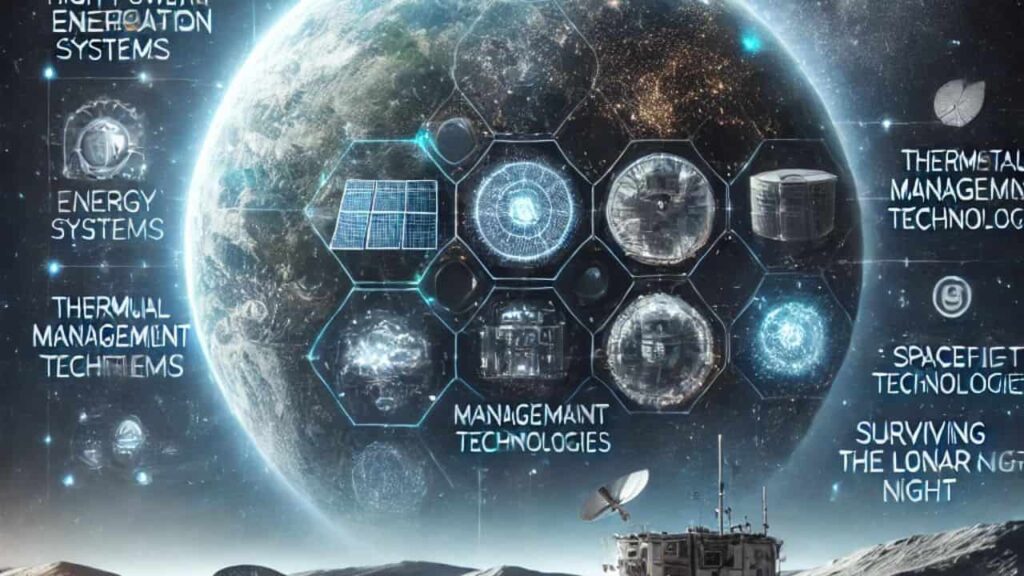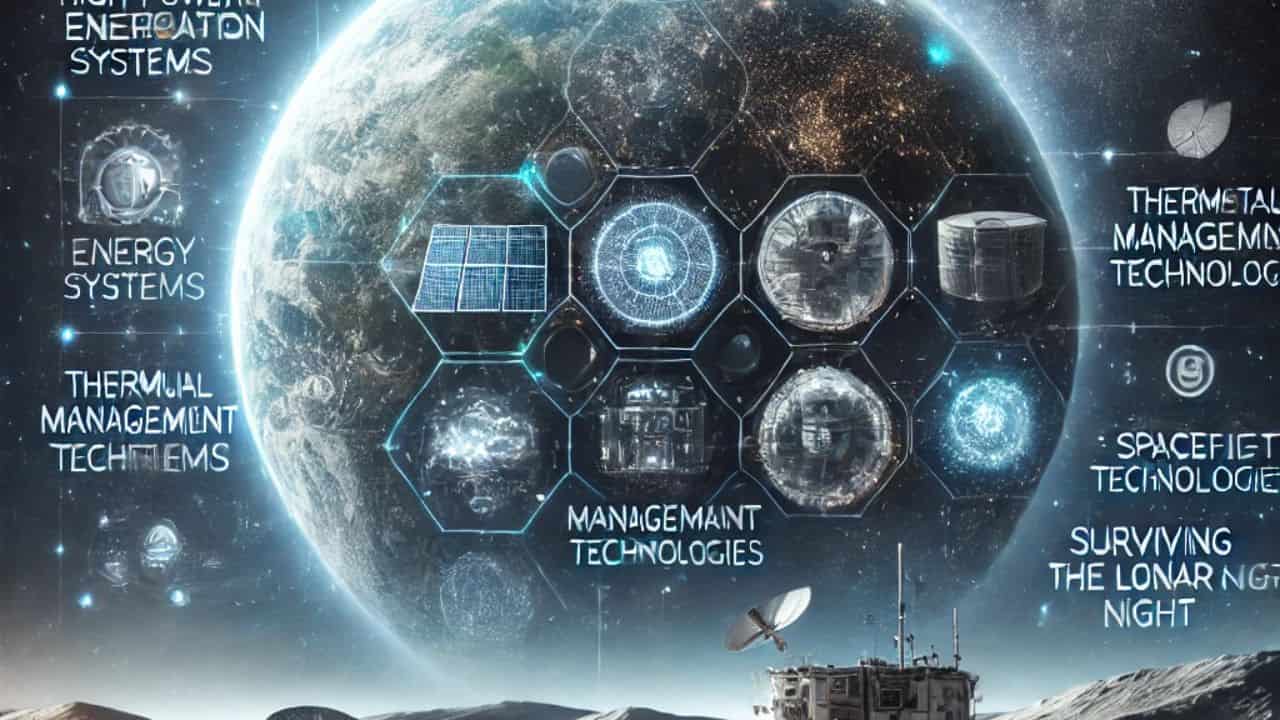NASA 2024, Civil Space Shortfall, space technology challenges, lunar night survival, space exploration technology, NASA technology ranking, space mission needs, aerospace community, space technology development, space innovation
Discover how NASA’s 2024 Civil Space Shortfall Ranking identifies and prioritizes critical technology gaps essential for future space exploration. Learn about the top challenges and collaborative efforts driving technological advancements in space.

NASA Releases First Integrated Ranking of Civil Space Challenges
In the spring of 2024, NASA unveiled a comprehensive document outlining nearly 200 technology areas that require further development to meet the needs of future exploration, science, and other mission objectives. This initiative marked a significant step forward in NASA’s efforts to integrate and prioritize the aerospace community’s most pressing technical challenges, thereby guiding the agency’s space technology development and investment strategies.
NASA’s Space Technology Mission Directorate (STMD) has now released the 2024 Civil Space Shortfall Ranking document. This inaugural ranking integrates inputs from various stakeholders, including NASA mission directorates and centers, small and large industry organizations, government agencies, academia, and other interested individuals. The list, which will be updated annually, serves as a critical tool for guiding NASA’s technology development projects and investments.
Building Consensus Across the Aerospace Industry
Jim Free, NASA Associate Administrator, emphasized the importance of identifying consensus among the aerospace industry’s challenges to find collective solutions. “This is the groundwork for strengthening the nation’s technological capabilities to pave the way for new discoveries, economic opportunities, and scientific breakthroughs that benefit humanity,” Free stated. The integrated results highlight strong stakeholder agreement among the top 30 most critical shortfalls.
Top-Ranked Challenges and Potential Solutions
At the top of the list is the challenge of surviving and operating through the lunar night. The significant and sustained temperature drops during the lunar night make it difficult to run science experiments, rovers, habitats, and more. Potential solution technologies include new power, thermal management, and motor systems. Following closely are the needs for high-power energy generation on the Moon and Mars, and high-performance spaceflight computing.
Other highly rated capability areas in the top 20 include advanced habitation systems, autonomous systems and robotics, communications and navigation, power, avionics, and nuclear propulsion. Beyond the top quartile, stakeholder shortfall scores varied, likely reflecting their specific interests and expertise. The interdependence of many shortfalls underscores the necessity for strategic investments across multiple areas to maintain U.S. leadership in space technology and stimulate economic growth.
Integrating Feedback and Refining Strategies
The inputs received from the aerospace community are already sparking meaningful discussions that will help NASA and its stakeholders make informed decisions. NASA plans to refine the process and results annually to ensure the approach remains effective and beneficial for fostering resilience in space technology endeavors.
“This effort is an excellent example of our directorates working together to assess future architecture needs that will enable exploration and science for decades to come,” said Nujoud Merancy, deputy associate administrator for the Strategy and Architecture Office within NASA’s Exploration Systems Development Mission Directorate.
Stakeholder Engagement and Methodology
The 2024 rankings are based on 1,231 total responses, including 769 internal and 462 external responses. Twenty responses were consolidated, representing multiple individuals from the same organization. STMD calculated average shortfall scores for each organization, then grouped, totaled, and averaged scores for nine stakeholder groups, applying pre-determined weights to create the overall ranking. The document also includes the ranked results for each stakeholder group based on the 2024 feedback.
The rankings are derived from numerical scores rather than responses to open-ended questions, though NASA anticipates that the qualitative feedback will provide additional insights. The agency will host a webinar on July 26, 2024, at 2 p.m. EDT, to overview the ranking process and results, further engaging the community in the discussion.
Strategic Implications and Future Directions
The Civil Space Shortfall Ranking is a pivotal step in aligning NASA’s technology development efforts with the broader needs and priorities of the aerospace community. By identifying and addressing the most critical technical challenges, NASA aims to strengthen the U.S. space program and ensure continued leadership in space exploration and technology.
The emphasis on surviving the lunar night, for example, highlights the challenges posed by the Moon’s harsh environment. Developing robust power and thermal management systems is crucial for sustaining operations during the prolonged lunar night. Similarly, the need for high-power energy generation on the Moon and Mars underscores the importance of reliable and efficient power sources for future missions.
High-performance spaceflight computing is another critical area, reflecting the increasing reliance on advanced computational capabilities for mission planning, navigation, and data analysis. As space missions become more complex, the demand for sophisticated computing solutions will continue to grow.
Collaborative Efforts and Technological Advancements
The integrated ranking document also underscores the importance of collaboration across different sectors. By bringing together inputs from various stakeholders, NASA is fostering a collaborative environment that encourages innovation and the sharing of expertise. This collective approach is essential for addressing the multifaceted challenges of space exploration.
Advanced habitation systems, for instance, require inputs from experts in life sciences, engineering, and materials science to develop habitats that can support human life in space. Autonomous systems and robotics are crucial for performing tasks that are too dangerous or impractical for humans, necessitating collaboration between robotics experts and mission planners.
Communications and navigation technologies are fundamental for maintaining connectivity and ensuring the safe operation of space missions. Innovations in these areas can enhance mission efficiency and safety, supporting the broader goals of exploration and scientific discovery.
Economic Opportunities and Scientific Breakthroughs
The strategic investments guided by the Civil Space Shortfall Ranking have the potential to drive significant economic growth. By addressing critical technological gaps, NASA can create new opportunities for the aerospace industry and stimulate the development of new markets.
Moreover, the advancements in space technology can lead to scientific breakthroughs that benefit humanity. For example, the development of advanced power systems for space missions could have applications in renewable energy technologies on Earth. Similarly, innovations in spaceflight computing could enhance computational capabilities in various fields, from climate modeling to medical research.
Conclusion
NASA’s release of the 2024 Civil Space Shortfall Ranking document marks a significant milestone in the agency’s efforts to align its technology development with the needs of the broader aerospace community. By identifying and prioritizing the most critical technical challenges, NASA is laying the groundwork for future exploration, scientific discoveries, and economic opportunities.
The integrated approach, involving inputs from a diverse range of stakeholders, ensures that the ranking reflects a broad consensus on the most pressing challenges. This collaborative effort will guide NASA’s technology development projects and investments, fostering innovation and resilience in the face of evolving space exploration demands.
As NASA continues to refine the ranking process and engage with the aerospace community, the Civil Space Shortfall Ranking will remain a vital tool for shaping the future of space technology. Through strategic investments and collaborative efforts, NASA aims to maintain U.S. leadership in space exploration and technology, driving progress and creating opportunities that benefit humanity as a whole.
Read More
- NASA Missy Elliott: Hip-Hop Song Beamed to Venus
- NASA Hubble Unveils Strong Evidence for Intermediate-Mass Black Hole in Omega Centauri
- NASA Perseverance Team Revives SHERLOC Instrument, Advancing Search for Ancient Martian Life
- Top 5 BEST Car Stereos of 2023










